Table of Contents
Adding a few indoor plants is a quick and effective way to infuse personality, color, and feng shui vibes into your home. Compared to other design updates, houseplants are more affordable and bring invigorating energy and color to your space. Beyond their aesthetic appeal, the best indoor plants also offer health benefits. Airpurifying indoor plants with names can help filter harmful chemicals from the air, and being around plants can reduce anxiety and stress levels.
You don’t need to be a gardening expert to keep indoor plants alive. There are numerous easytocarefor indoor plants that don’t require intensive maintenance or strict watering schedules. The easiest indoor plant names to care for include succulents, which thrive in sunny spots, and trailing pothos plants for less sunny areas. Even if your living space lacks natural light, lowlight indoor plants like ZZ plants and philodendrons can flourish in dim corners. Just choose the plant you find most appealing and follow our simple care instructions.
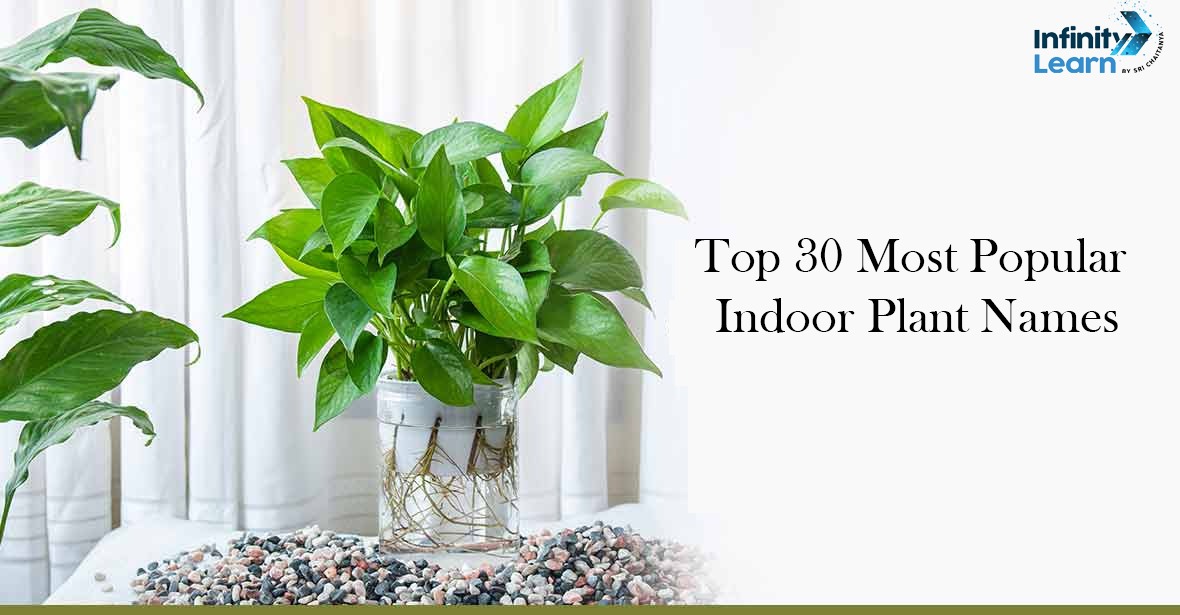
Many plants actually grow better indoors due to controlled conditions. To help you start your indoor plant collection, we’ve compiled a list of the best indoor plants, along with their care levels and tips to help them thrive.
If you love the outdoors, having indoor plants is essential, regardless of your living situation. However, plants require care and attention to grow and bloom. If you have a busy schedule, careful selection can ensure you have indoor plants that thrive with minimal effort. For those seeking greenery that requires minimal attention, consider these top 10 lowmaintenance indoor plants.
Also Check: Medicinal Plant Names
In this article, we’ll introduce you to the top 30 indoor plants that require minimal maintenance, making it easy to create your own urban jungle. From snake plants to aloe vera, Chinese evergreen to rubber plants, this list covers a range of indoor plant names. With the right light and occasional watering, these houseplants will thrive with little effort from you. Ready to add life to your living space in the simplest way possible? Keep reading to discover your new lowmaintenance plant companions, complete with indoor plants names and images.
30 Indoor Plant Names with Images
Aloe Vera (Aloe Vera)
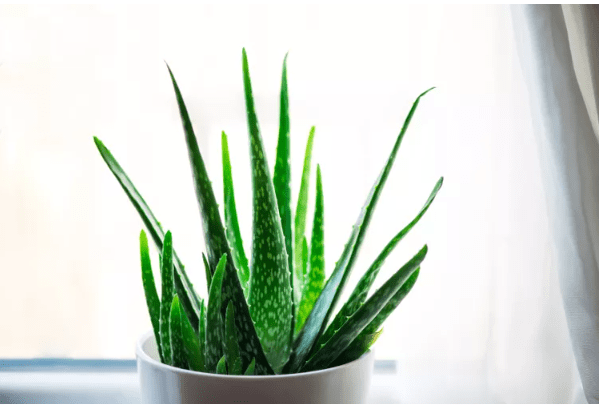
Aloe Vera is renowned for its low maintenance nature and health benefits, making it a popular choice for households across numerous states, as revealed by a recent survey from Joybird, a home furnishings site. Its appeal lies in its simplicity—requiring little more than a sunny spot and occasional watering—and the therapeutic properties found within its gelfilled leaves.
Care Recommendations
- Light: Opt for bright lighting conditions.
- Soil: Sandy, acidic soil, such as a cactus potting mix, suits it best.
- Water: Allow the soil to dry out between watering sessions.
- Temperature: Aim for a range of 55 to 85 degrees Fahrenheit.
- Humidity: Maintain a level around 40%.
Golden Pothos (Epipremnum Aureum)
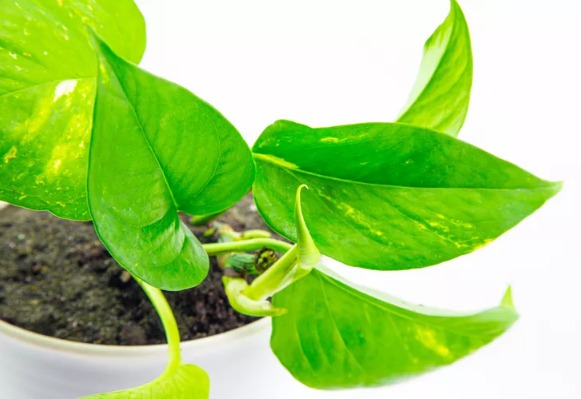
Golden Pothos, also known as devil’s vine, is consistently a top seller on plant platforms like Costa Farms and the Sill. Its popularity stems from its ease of care and ability to thrive in lowlight environments.
Care Recommendations
- Light: Preferably bright, indirect light, though it can tolerate low light.
- Soil: Opt for moist, welldraining soil.
- Water: Allow the soil to dry out before watering.
- Temperature: Maintain temperatures between 65 to 75 degrees Fahrenheit.
- Humidity: Aim for a range of 50 to 70%.
Snake Plants (Dracaena Trifasciata)
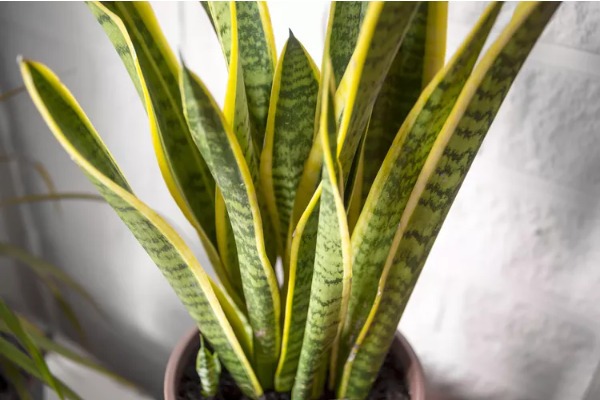
Snake Plant, also called motherinlaw’s tongue, is favored for its beginnerfriendly nature and adaptability. It thrives in various lighting conditions, from low light to direct sunlight.
Care Recommendations
- Light: Bright, indirect light is ideal.
- Soil: Choose a light, welldraining soil mix, particularly suitable for succulents or cacti.
- Water: Let the soil dry out between watering sessions.
- Temperature: Maintain temperatures between 70 to 90 degrees Fahrenheit.
- Humidity: Aim for a range of 30 to 50%.
Moth Orchid (Phalaenopsis Amabilis)
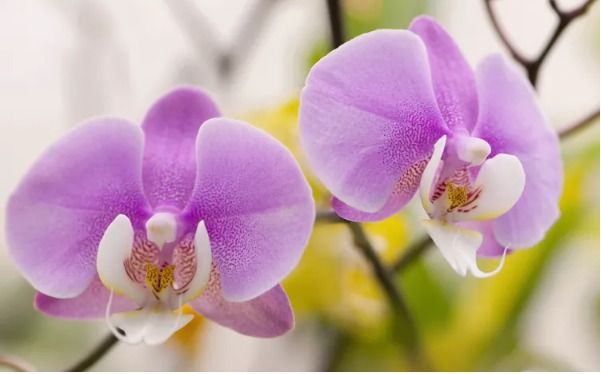
Moth Orchids add vibrant colors to indoor spaces and are manageable for beginners with the right care. Providing them with specific orchid products and appropriate lighting conditions can ensure their thriving growth and blooming.
Care Recommendations
- Light: Bright, indirect light is preferable.
- Soil: Opt for light, welldraining soil enriched with bark, moss, or peat.
- Water: Allow the soil to dry out between watering sessions.
- Temperature: Aim for a range of 50 to 90 degrees Fahrenheit.
- Humidity: Maintain humidity levels between 40 to 70%.
Peace Lily
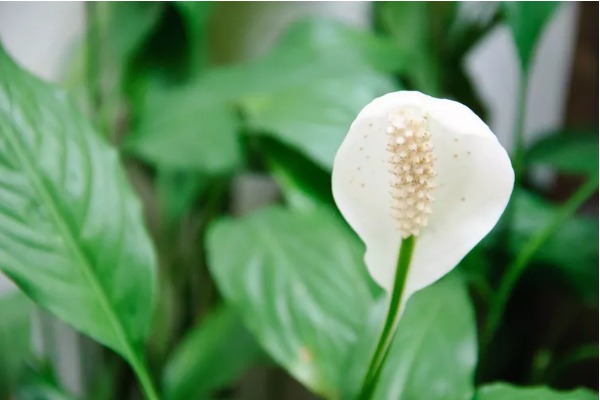
Peace Lily is a tropical favorite known for its frequent blooming and symbolic white flowers. Recreating a warm, humid environment is crucial for its flourishing growth.
Care Recommendations
- Light: Indirect light is preferable.
- Soil: Choose moist, welldraining soil.
- Water: Let the soil dry out between watering sessions.
- Temperature: Maintain temperatures between 65 to 80 degrees Fahrenheit.
- Humidity: Aim for a range of 50 to 70%.
Basil (Ocimum Basilicum)
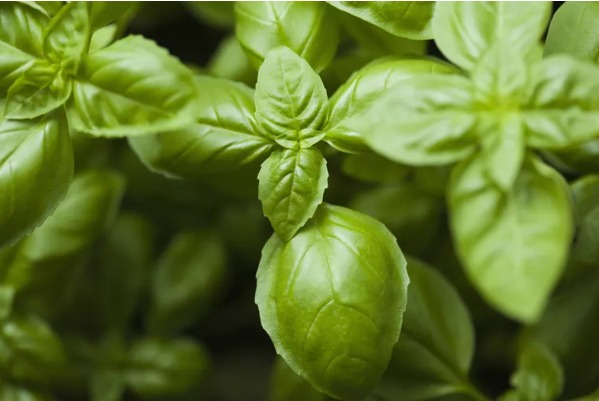
Basil, a popular herb for culinary use, thrives in bright sunlight and requires consistently moist soil.
Care Recommendations
- Light: Bright sunlight is essential.
- Soil: Opt for moist, welldraining soil.
- Water: Keep the soil consistently moist and mist occasionally.
- Temperature: Maintain temperatures around 70 degrees Fahrenheit.
- Humidity: Aim for a range of 50 to 70%.
African Violet (Saintpaulia Lonantha)
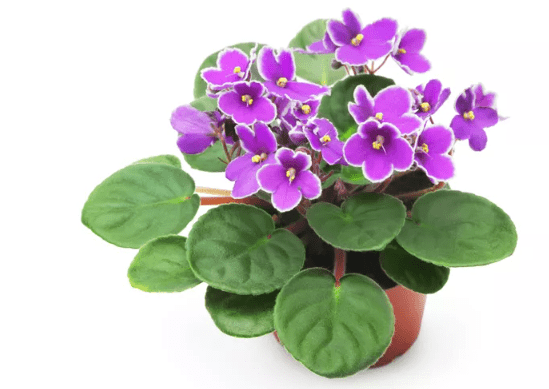
African Violets are beloved for their delicate purple blooms, requiring ample light, warmth, and humidity for thriving growth.
Care Recommendations
- Light: Provide bright, indirect light.
- Soil: Opt for moist, welldraining soil.
- Water: Keep the soil consistently moist.
- Temperature: Maintain temperatures around 70 degrees Fahrenheit.
- Humidity: Aim for a range of 50 to 70%.
Also Check: Insect Name
Jade Plant (Crassula Ovata)
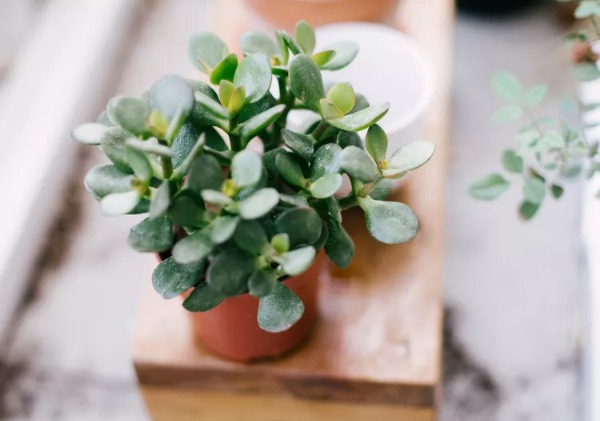
Jade Plants, as succulents, require minimal watering and ample sunlight for growth, making them a durable choice for indoor environments.
Care Recommendations
- Light: Provide bright, indirect light.
- Soil: Opt for light, welldraining soil, preferably a blend suitable for succulents.
- Water: Keep soil moist in spring and summer; water monthly in winter.
- Temperature: Maintain temperatures between 60 to 75 degrees Fahrenheit.
- Humidity: Aim for a range of 30 to 50%.
Spider Plant (Chlorophytum Comosum)
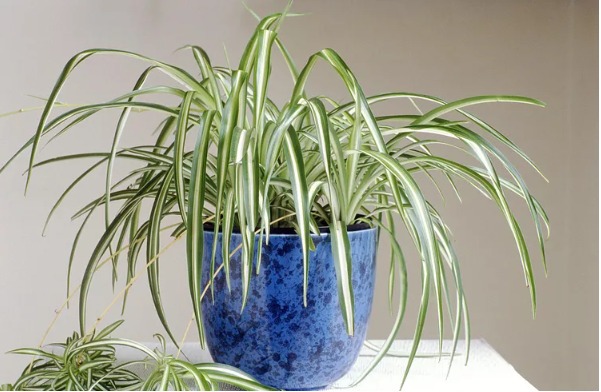
Spider Plants are resilient and easy to propagate, thriving in warm, humid conditions and moderate indirect light.
Care Recommendations
- Light: Bright to moderate indirect light.
- Soil: Choose loamy, welldraining soil.
- Water: Allow the top 2 inches of soil to dry out between watering sessions.
- Temperature: Aim for a range of 50 to 90 degrees Fahrenheit.
- Humidity: Maintain humidity levels between 50 to 70%.
Rubber Plant (Ficus Elastica)
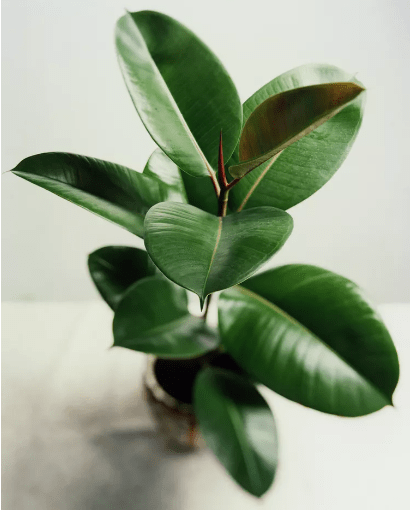
Rubber Plants, with their striking foliage, require bright, indirect light and regular watering to thrive as indoor tropical plants.
Care Recommendations
- Light: Provide bright, indirect light.
- Soil: Opt for light, welldraining soil.
- Water: Keep the plant consistently moist with regular watering.
- Temperature: Maintain temperatures between 60 to 75 degrees Fahrenheit.
- Humidity: Aim for a range of 30 to 50%.
Dumb Cane Plant (Dieffenbachia)
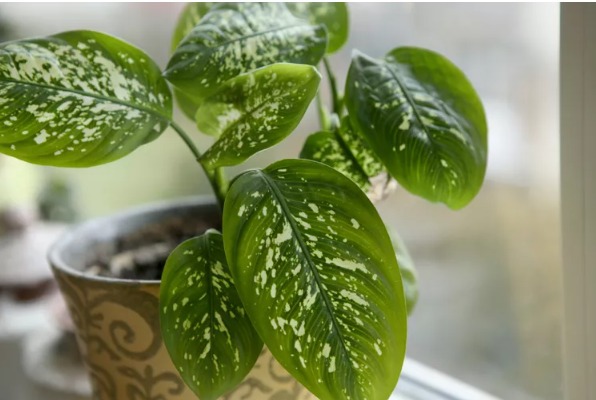
Dumb Cane plants are valued for their unique, patterned leaves and are easy to care for. There are many types, some of which can grow into larger trees, becoming a striking feature in your plant collection.
Care Tips
- Light: Bright, indirect light
- Soil: Light, well-draining soil
- Water: Keep the soil moist with regular watering
- Temperature: 65 to 75 degrees Fahrenheit
- Humidity: 50 to 70%
Note: This plant is toxic to pets.
Also Check: Birds Name
Monstera Deliciosa
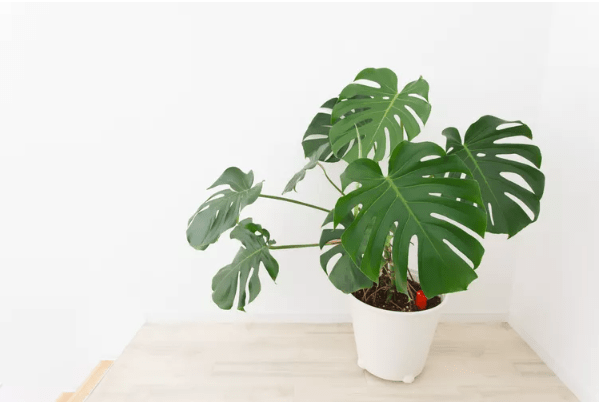
Monstera Deliciosa, often called the Swiss cheese plant, is loved for its beautiful leaves. It’s known for its fast growth and large, dramatic leaves with holes. Perfect for bright, open spaces, it adapts well to indoor environments.
Care Tips
- Light: Bright, indirect light
- Soil: Well-draining, peat-based soil
- Water: Keep the soil moist with regular watering in spring and summer; water less in fall and winter
Temperature: 65 to 75 degrees Fahrenheit
Humidity: 50 to 70%
Rosemary (Salvia Rosmarinus)
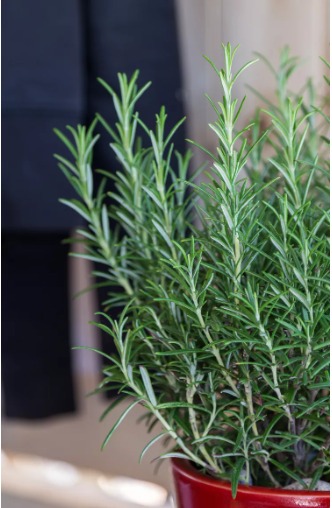
Rosemary is a perennial herb that thrives on a sunny windowsill, adding flavor to dishes. It can be a bit challenging to keep healthy in winter due to its need for bright sunlight, but it tolerates drought well.
Care Tips
- Light: Bright, full sunlight
- Soil: Dry, well-draining soil (cactus mix works well)
- Water: Allow the soil to dry out between waterings, and mist biweekly
- Temperature: 50 to 80 degrees Fahrenheit
- Humidity: 40 to 70%
Umbrella Plant (Schefflera Actinophylla)
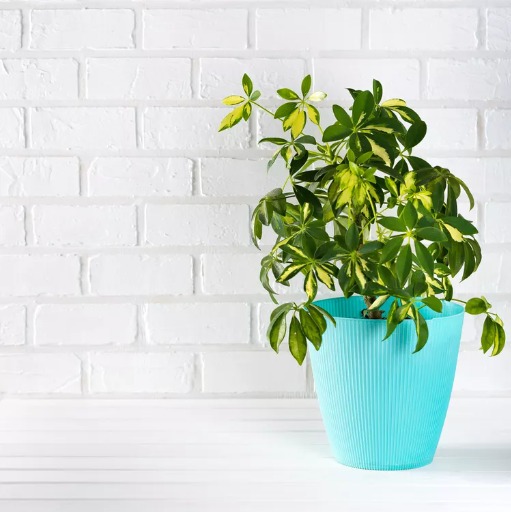
The Umbrella Plant is a fast-growing tropical plant that loves warm and humid conditions. Be prepared to repot it as it grows quickly.
Care Tips
- Light: Bright, indirect light
- Soil: Rich, moist soil
- Water: Allow the soil to dry between waterings, then soak well; mist during spring and summer
- Temperature: 60 to 80 degrees Fahrenheit
- Humidity: 50 to 70%
Note: This plant can be toxic to pets.
Money Tree (Guiana Chestnut)
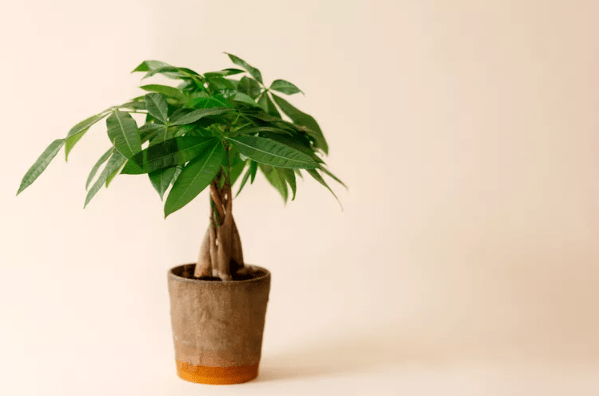
Money Trees, also known as Guiana Chestnut, are popular for their ability to thrive indoors. They are believed to bring good luck and feature large, star-shaped leaves and a braided trunk.
Care Tips
- Light: Bright, indirect light
- Soil: Rich, well-draining soil
- Water: Water when the top inch of soil is dry, less frequently in winter
- Temperature: 65 to 75 degrees Fahrenheit
- Humidity: 50 to 70%
Lucky Bamboo (Dracaena Sanderiana)
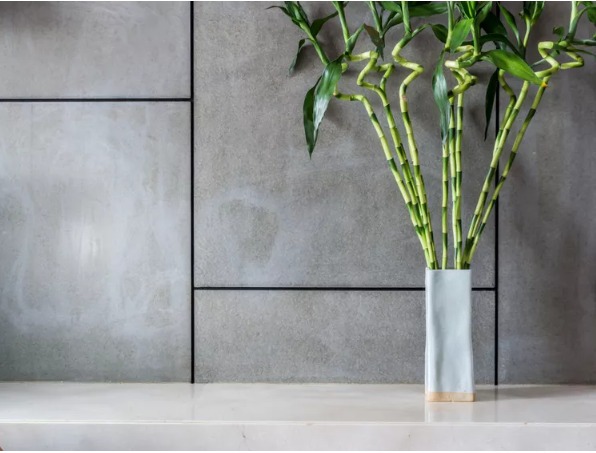
Lucky Bamboo is easy to care for and is thought to bring good luck. Despite its name, it’s not actually bamboo but a type of succulent that grows in water.
Care Tips
- Light: Bright to moderate indirect light
- Soil: Rich, well-drained potting soil or just water
- Water: Use bottled or distilled water, and change the water weekly
- Temperature: 65 to 90 degrees Fahrenheit
- Humidity: 30 to 50%
Also Check: Fruits Name
English Ivy (Hedera helix)
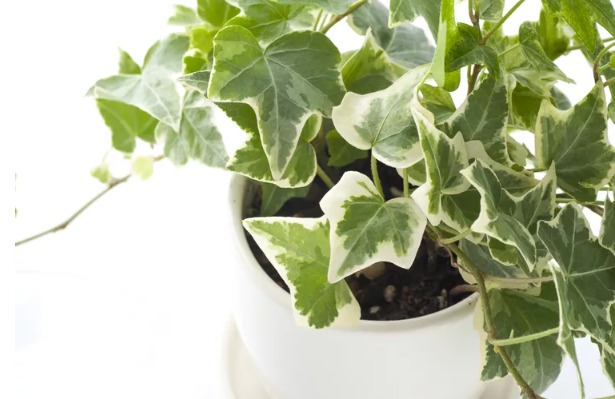
English Ivy is great for hanging baskets due to its trailing growth. It can thrive in low light, making it perfect for darker corners of your home.
Care Tips
- Light: Moderate indirect light
- Soil: Moist, well-draining soil
- Water: Let the soil dry out between waterings
- Temperature: 70 to 90 degrees Fahrenheit
- Humidity: 30 to 50%
ZZ Plant (Zamioculcas Zamiifolia)
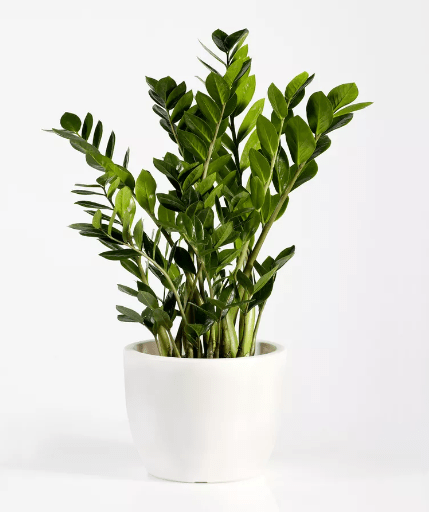
The ZZ Plant is ideal for beginners due to its hardy nature. It features deep green leaves and can tolerate low light and infrequent watering.
Care Tips
- Light: Bright, indirect light
- Soil: Well-draining soil
- Water: Allow the soil to dry out completely between waterings
- Temperature: 50 to 90 degrees Fahrenheit
- Humidity: 30 to 50%
Boston Fern (Nephrolepis Exaltata)
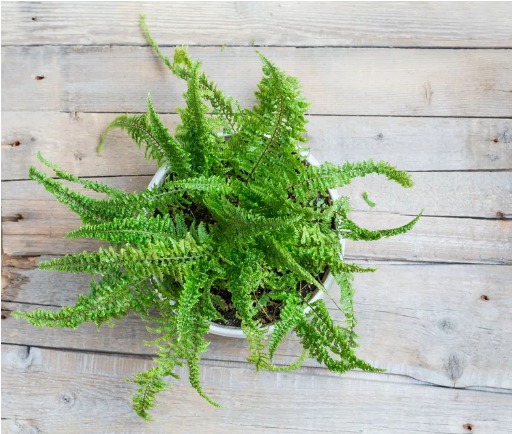
Boston Ferns love humidity and water, making them perfect for bathrooms. They require less sunlight and can thrive in offices or darker rooms.
Care Tips
- Light: Bright, indirect light
- Soil: Rich, well-draining soil with peat and perlite
- Water: Water frequently to keep the soil moist, reduce watering in fall and winter
- Temperature: 65 to 75 degrees Fahrenheit
- Humidity: Over 80%
Areca Palms (Dypsis Lutescens)
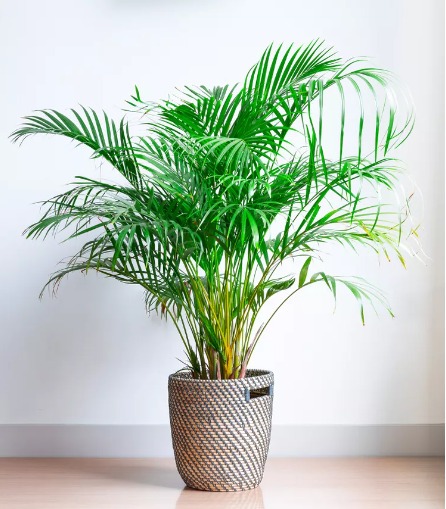
Areca Palms, also known as butterfly palms, are tall and beautiful, growing up to 8 feet. They thrive in indirect sunlight but should not be overwatered.
Care Tips
- Light: Bright, indirect light
- Soil: Peaty, well-draining soil
- Water: Allow the soil to dry out between waterings
- Temperature: 65 to 75 degrees Fahrenheit
- Humidity: 40 to 70%
Also Check: Rashi Name
Fiddle Leaf Fig (Ficus Lyrata)
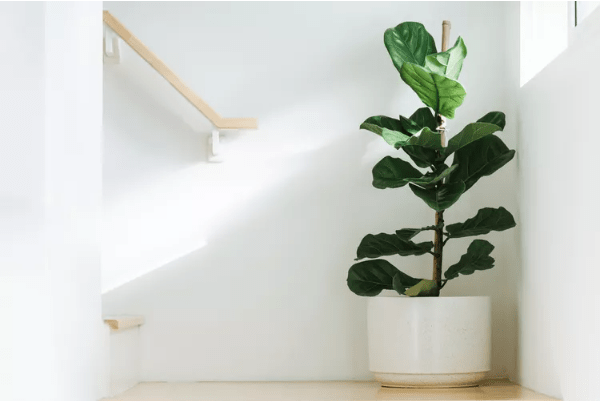
The Fiddle Leaf Fig is a well-loved houseplant that flourishes in bright light. Place it near a southern or western window to keep it happy and prevent leaf drop. However, it has a reputation for being finicky and often appears on lists of difficult plants to care for. If you can meet its light and water needs, it will become a beautiful tree in your home.
Care Tips
- Light: Bright, indirect light
- Soil: Light, well-draining soil
- Water: Water when the top inch of soil is dry
- Temperature: 60 to 85 degrees Fahrenheit
- Humidity: 30 to 65%
Note: This plant can be toxic to pets.
Pilea (Pilea Peperomioides)
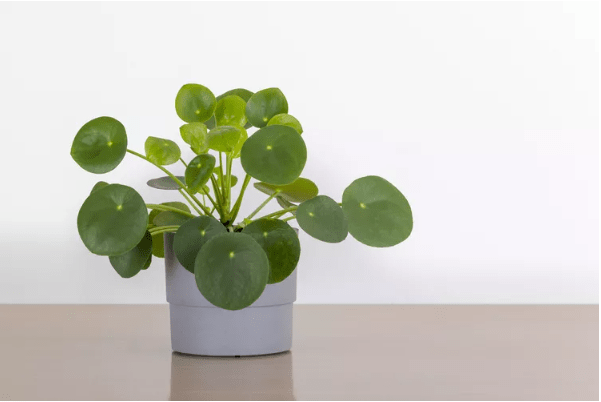
Commonly known as the Chinese money plant or pancake plant, the Pilea is an easy-to-care-for houseplant with round leaves. It’s a great choice for beginners.
Care Tips
- Light: Bright to moderate indirect light
- Soil: Rich, well-draining soil
- Water: Let the soil dry out between waterings
- Temperature: 50 to 90 degrees Fahrenheit
- Humidity: 30 to 50%
Bromeliads (Bromeliaceae)

Bromeliads are popular for their colorful blooms and minimal care needs. As air plants, they can grow without soil and are perfect for adding a splash of color to your space.
Care Tips
- Light: Bright, indirect light
- Soil: Fast-draining soil or none if grown as air plants
- Water: Water into the center of the plant or lightly moisten the soil
- Temperature: 60 to 85 degrees Fahrenheit
- Humidity: 40 to 50%
Dragon Tree (Dracaena Marginata)
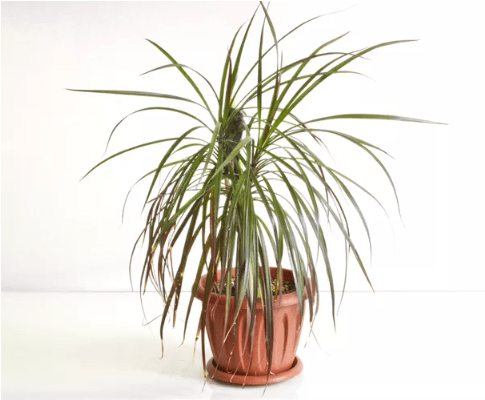
The Dragon Tree is known for its spiky leaves and hardiness, making it an ideal choice for beginners or as an office plant.
Care Tips
- Light: Bright to moderate indirect light
- Soil: Light, well-draining soil
- Water: Let soil dry out between waterings
- Temperature: 70 to 80 degrees Fahrenheit
- Humidity: 30 to 50%
Note: This plant is toxic to pets.
String of Pearls (Curio Rowleyanus)
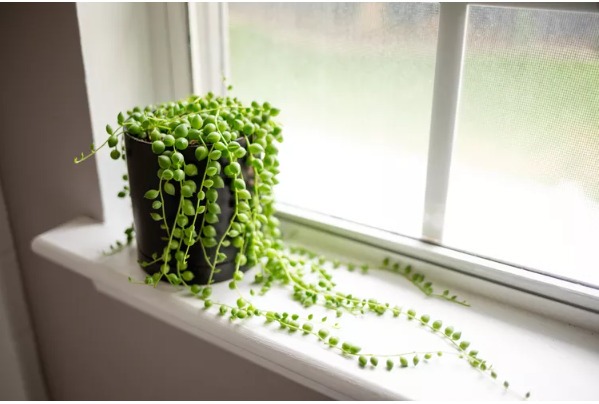
The String of Pearls is a trailing succulent perfect for hanging pots or bookshelves. You can propagate new plants from cuttings to help your original plant thrive.
Care Tips
- Light: Bright, indirect light
- Soil: Sandy, succulent, or cactus potting soil
- Water: Water weekly or biweekly to keep lightly moist
- Temperature: 50 to 90 degrees Fahrenheit
- Humidity: 30 to 50%
Note: This plant can be toxic to pets and small children.
Also Check: Instagram Name for Boys and Girls
Croton (Codiaeum Variegatum)
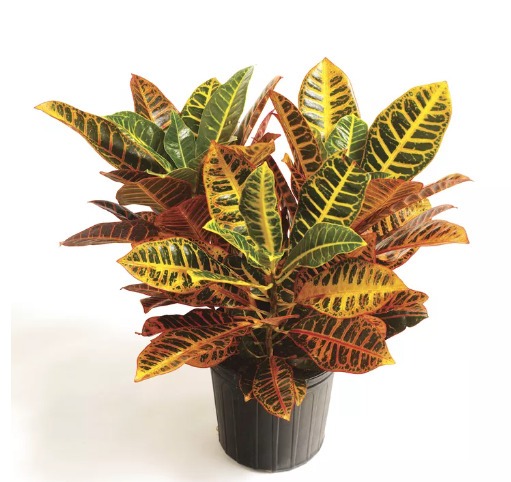
Crotons are admired for their colorful foliage and are a common favorite on plant bestseller lists. They thrive in warm, humid environments and might need a humidity tray or humidifier.
Care Tips
- Light: Bright, indirect light
- Soil: Light, well-draining soil
- Water: Keep soil moist in summer and drier in winter
- Temperature: 60 to 80 degrees Fahrenheit
- Humidity: 40 to 80%
Chinese Evergreen (Aglaonema Commutatum)
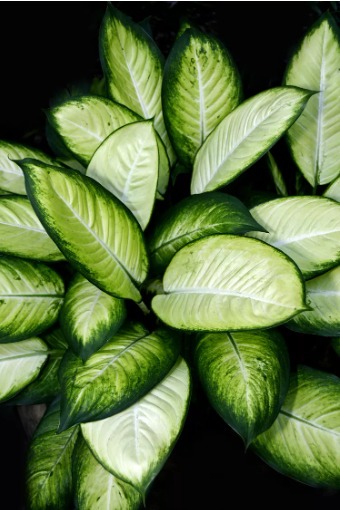
The Chinese Evergreen is a versatile and easy-care plant that thrives in various light and water conditions. It’s also known for its air-purifying qualities.
Care Tips
- Light: Indirect or low light
- Soil: Light, well-draining soil
- Water: Let the soil dry out between waterings
- Temperature: 70 to 90 degrees Fahrenheit
- Humidity: 50 to 70%
Ponytail Palm (Beaucarnea Recurvata)
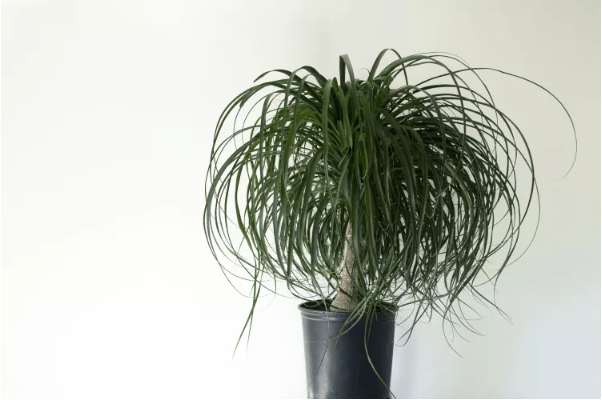
With its shaggy leaves and thick trunk, the Ponytail Palm is a trendy and low-maintenance plant. It grows slowly and can become tree-sized indoors.
Care Tips
- Light: Bright sunlight
- Soil: Sandy, cactus, or succulent soil
- Water: Water weekly to biweekly in spring and summer, monthly in winter
- Temperature: 60 to 90 degrees Fahrenheit
- Humidity: 30 to 50%
Oyster Plant (Tradescantia Spathacea)
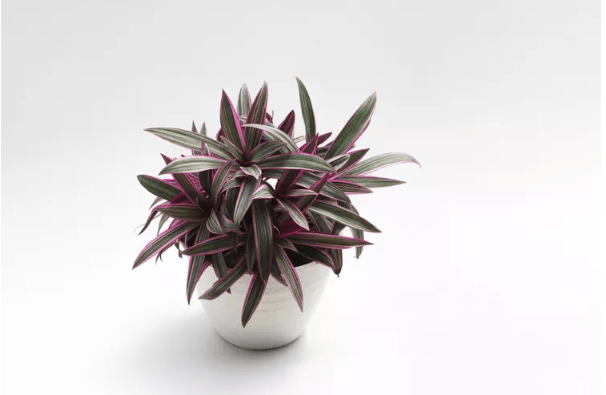
The Oyster Plant, known for its colorful green and purple leaves, is a low-maintenance plant that can thrive indoors or outdoors.
Care Tips
- Light: Bright, indirect light
- Soil: Rich, well-draining soil
- Water: Let the soil dry out at least 2 inches between waterings
- Temperature: 50 to 80 degrees Fahrenheit
- Humidity: 40 to 70%
Also Check: Colours Name
Kalanchoe (Kalanchoe spp.)
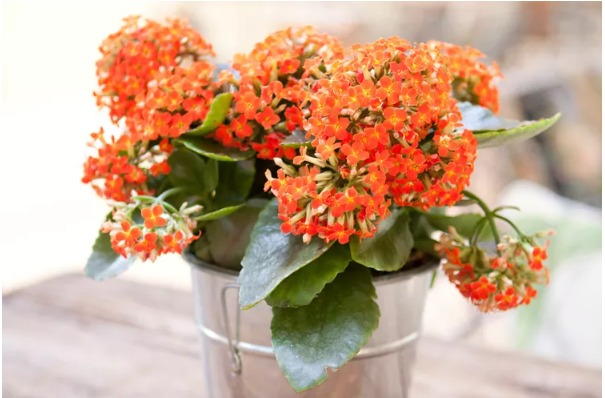
Kalanchoe is a succulent with beautiful blooms, making it a popular houseplant. It’s easy to care for and adds a vibrant touch to any plant collection.
Care Tips
- Light: Bright, indirect light
- Soil: Light, well-draining soil, preferably a succulent or cactus blend
- Water: Let the soil dry out 1 to 2 inches between waterings
- Temperature: 60 to 80 degrees Fahrenheit
- Humidity: 30 to 50%
How Do House Plants Contribute to Good Health?
The beauty of house plants and the care we give them can be incredibly healing. Looking at aesthetically pleasing plants can boost neurotransmitters like dopamine and serotonin. Keeping plants encourages the brain to look forward to interacting with them, releasing feel-good neurochemicals.
Plants offer immediate benefits by improving mood and helping with stress management. They also provide long-term benefits like improving air quality, which can reduce headaches, and adding moisture to the air, which helps with dry skin. Handling soil that contains microbes can promote microbiome diversity in your home, benefiting gut and skin health.
However, having houseplants alone isn’t a recommended treatment for any medical condition. Encouraging patients to consider having houseplants is just one part of a broader, individualized healthcare plan.
What Are the Best Indoor Plants for Air Purification?
Research shows that plants can help purify the air, especially in areas with questionable air quality. Breathing cleaner air can help you think more clearly, reduce stress, and lower the risk of asthma.
Houseplants like snake plants, spider plants, rubber plants, peace lilies, ferns, and English ivy are some of the best indoor plants for boosting oxygen levels and purifying the air. These plants absorb carbon dioxide, filter pollutants, and release oxygen, which can help improve focus, reduce headaches, and enhance mood.
What Are the Mental Health Benefits of Caring for a Houseplant?
Being around greenery offers many mental health benefits. Horticultural therapy, which uses plants to treat mental health conditions, helps improve memory, cognition, and socialization. Humans have an innate instinct to connect with nature, known as biophilia.
Caring for plants can reduce stress and anxiety, improve mood and concentration, and boost confidence. Plants provide a tangible, positive result for the caretaker, helping them feel more in control of their lives, which can reduce anxiety and promote overall wellness. Watching plants grow can be soothing, promote peaceful feelings, and provide a meditative experience.
Plants benefit health holistically because they are accepting and tolerant companions. They thrive with simple care and attention and visibly show gratitude for your efforts.
How to Take Care of Indoor Plants?
Watering Them Regularly
Different plants have different watering needs. Low-light indoor hanging plants like pothos thrive in high-moisture, low-light areas like bathrooms. Knowing the water needs and frequency for each plant type is crucial.
Fertilizing Them as Per Needs
Just like watering, fertilizing needs vary. The growth rate, age, and time of year affect how much fertilizer a plant needs. Avoid over-fertilizing as it can halt the plant’s growth.
Propagating Indoor Plants
Many indoor plants can be propagated to create new plants. This process rejuvenates the parent plant and encourages new growth.
Pruning Them as Needed
Pruning helps prevent pests and diseases from spreading and revitalizes the plant’s growth. It also helps maintain the plant’s shape.
Dusting Them Regularly
Indoor plants need occasional dusting, especially those with large leaves. This prevents diseases caused by dust buildup and helps keep the plant looking fresh.
Removing Dead/Dying Leaves & Flowers
Trimming dead or dying plant parts prevents diseases and maintains the plant’s health. This is especially important for indoor climbing plants that can affect the wall’s structural integrity.
Pest Control
All indoor plants are prone to pests. Regularly using pest control sprays helps keep plants healthy. Always be vigilant for any signs of houseplant diseases.
FAQs on Top 30 Most Popular Indoor Plant Names
What are indoor plants?
Indoor plants are appealing to look at and offer several health benefits without requiring much attention or maintenance.
Are indoor plants good?
Yes, indoor plants help clean the air, making it healthier to breathe.
Why are indoor plants beneficial for the home?
Indoor plants are great for homes as they help maintain comfortable humidity levels, reduce particulate matter and pollutants, improve acoustics, and enhance mental health by reducing stress. Studies show that having plants around can increase productivity, with reaction times being 12% faster when plants are present.
Do all plants need the same watering?
Different plants have different watering needs. For example, low-light indoor hanging plants like pothos thrive in low-light, high-moisture areas such as bathrooms.
Is pruning or trimming branches and flowers bad for the plant?
Pruning or trimming branches and flowers is not harmful. In fact, it helps keep pests and diseases from spreading, allowing the plant to regain shape and revitalize its growth.
What’s in our air that plants could help purify?
Plants purify the air through photosynthesis, where they absorb carbon dioxide and release oxygen. They also respire, taking in oxygen and expelling carbon dioxide.
Which plant purifies the air the best?
Florist’s chrysanthemums (mums) are rated as the best air purifiers. They remove ammonia and other common toxins from the air.
Why do plants purify the air?
Plants purify the air by removing pollutants and producing oxygen. Certain indoor and outdoor plants are especially effective at cleaning the air around us.
What plant is bad luck for your house?
Large trees like peepals should not be placed too close to a house as their roots can weaken the foundation. Avoid planting trees that attract worms, bees, insects, or snakes, as they bring bad luck.
What is the most popular house plant in the world?
The philodendron, especially the heart-leaf philodendron, is the most popular houseplant globally. It is easy to care for but toxic to pets. A popular, non-toxic alternative is the African violet.
What's the easiest popular indoor house plant to care for?
Aloe vera is one of the easiest houseplants to care for. Other low-maintenance options include succulents, spider plants, and snake plants, which require minimal watering and plenty of sunlight.
What is the most common type of house plant?
Aloe vera is the most common house plant due to its easy care and additional benefits. Aloe is anti-inflammatory, antimicrobial, and has wound-healing properties, making it a popular choice for homes.









